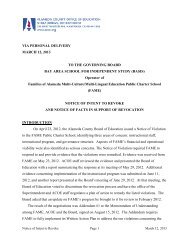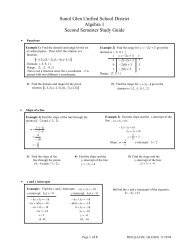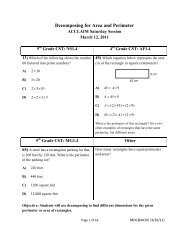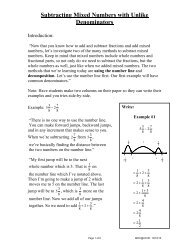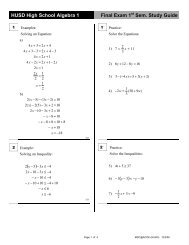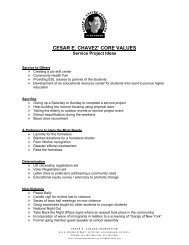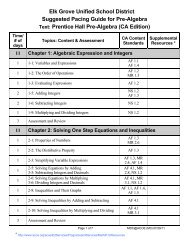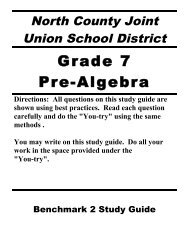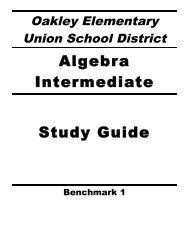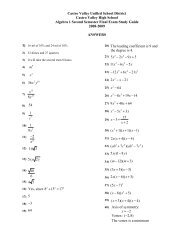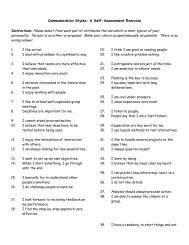Investigating Similar Triangles and Understanding Proportionality ...
Investigating Similar Triangles and Understanding Proportionality ...
Investigating Similar Triangles and Understanding Proportionality ...
- No tags were found...
Create successful ePaper yourself
Turn your PDF publications into a flip-book with our unique Google optimized e-Paper software.
<strong>Investigating</strong> <strong>Similar</strong> <strong>Triangles</strong> <strong>and</strong> Underst<strong>and</strong>ing <strong>Proportionality</strong>: Lesson PlanNOTE: Depending on your book <strong>and</strong> your department, it may be best to discuss how you would like students to write<strong>and</strong> compare ratios of corresponding sides. In this investigation, we compare the larger triangle to the smaller triangle butyour book or colleagues may do it differently.Lesson Opener (Teacher Copy):Objective: This lesson is designed to help students to discover the properties of similar triangles <strong>and</strong> to specificallyunderst<strong>and</strong> the concept of proportionality. They will be asked to determine the general conditions required to verify orprove that two triangles are similar. This lesson is intended to be used as a way to introduce these concepts with the ideathat formal postulates for proving triangle similarity will be supplied later.• Ask the class: List all Triangle Congruence Postulates that you know. Draw a picture of congruent triangleswith the corresponding parts indicated for each postulate. (Quickly review each postulate.)SSS ASA SAS AAS HL (Right triangles)• Ask the class: Do you believe that having all three angles of a triangle congruent is another way to prove trianglecongruence? Is AAA a triangle congruence postulate? Why or why not?o Remind them that a general definition of congruence states that figures must be the same size <strong>and</strong> thesame shape in order to be considered congruent. Refer to the symbol for congruence ( ). Compare thisto the symbol for equality <strong>and</strong> discuss that this refers to the equality of values whereas congruence refersto figures having the same size <strong>and</strong> shape. Allow the students to discuss. Call on a few students to sharetheir thoughts. Encourage them to draw pictures to support their claims.• Explain to the students that the measures of the angles of a triangle do not dictate the lengths of the sides. Showseveral examples of pairs of triangles that have the same shape (where corresponding angles are congruent) butthat are not the same size. Try to reach a consensus that the triangles have the same shape but not the same size.• Ask the class: Can you think a word that you could use to describe these triangles that look very much alike butthat we have all agreed, are not congruent? (Hopefully, they will come up with the word similar!)oIntroduce the symbol for similarity (~) <strong>and</strong> compare it to the previous symbols for congruence <strong>and</strong>equality. Explain that this symbol, when written alone, can be used to denote that two figures have thesame shape but not necessarily the same size.• Ask the class: Do you think that, in the same way congruent triangles have interesting properties; similartriangles will have interesting properties? Today, we will find out what those properties are!Page 2 of 7MCN@ACOE 03/12/11



